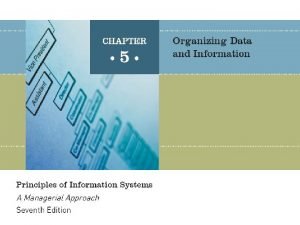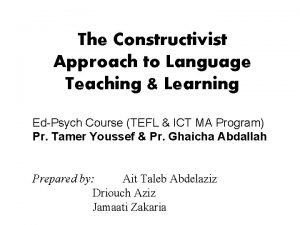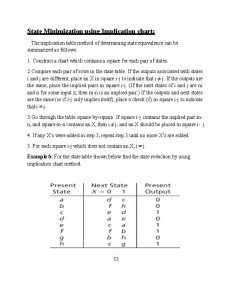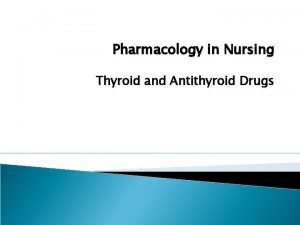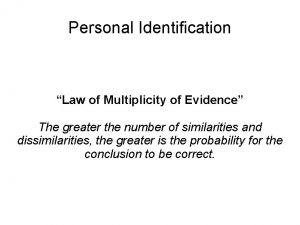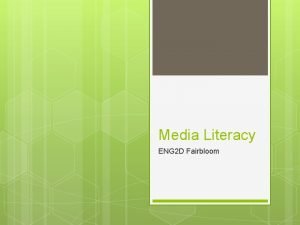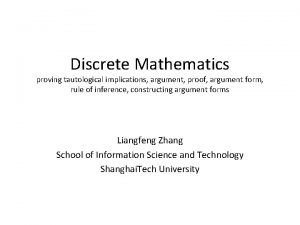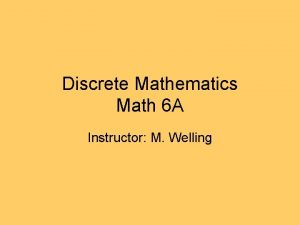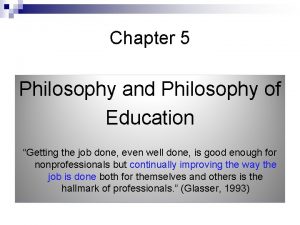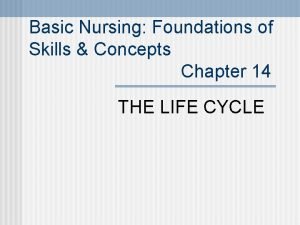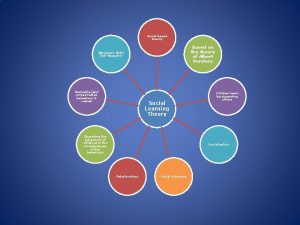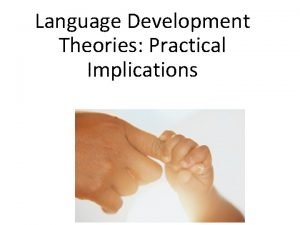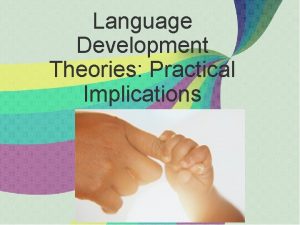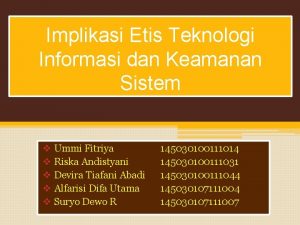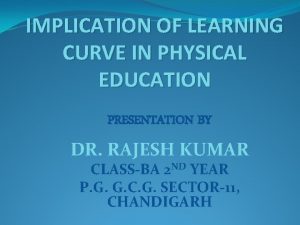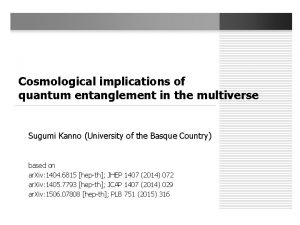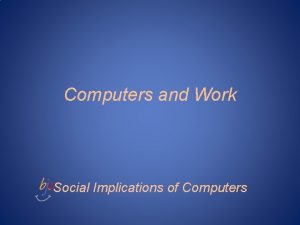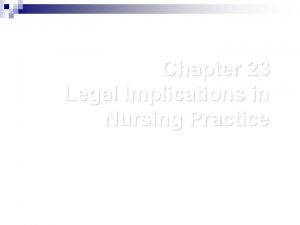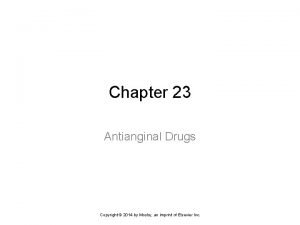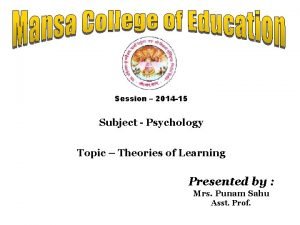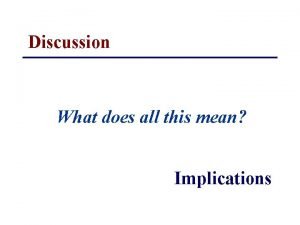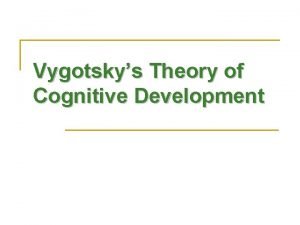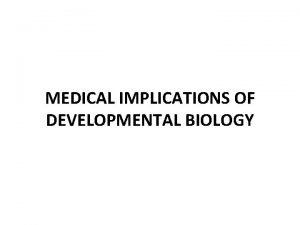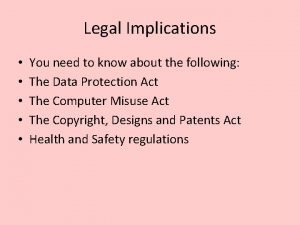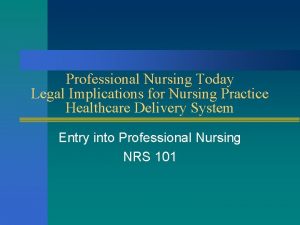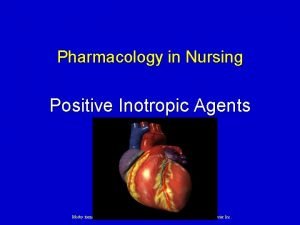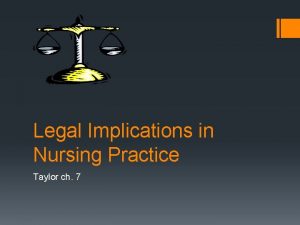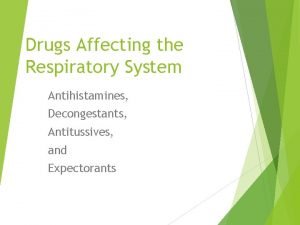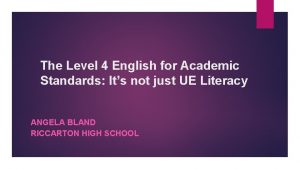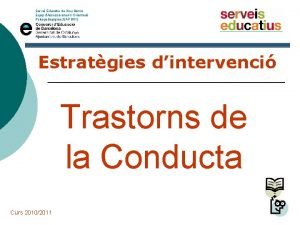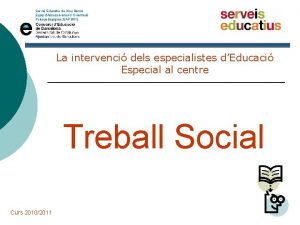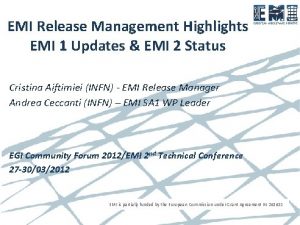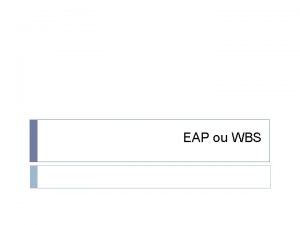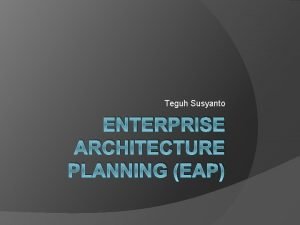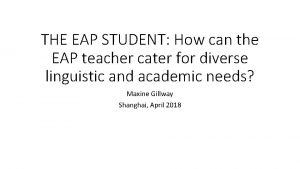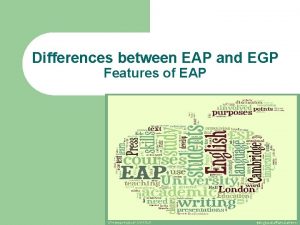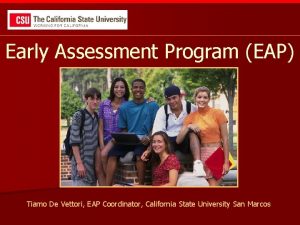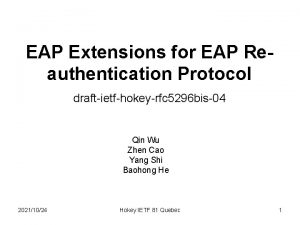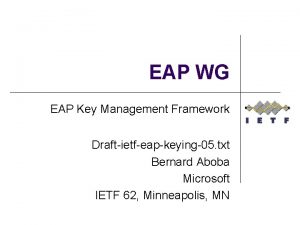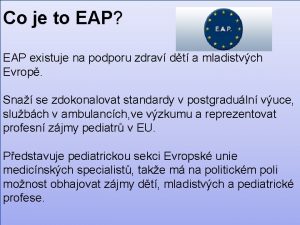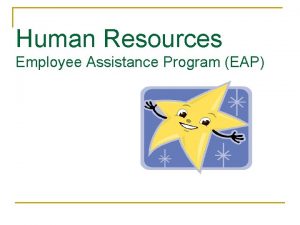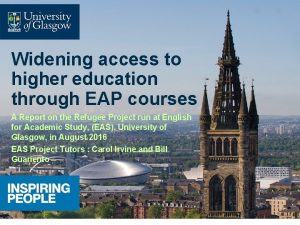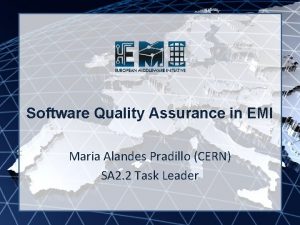EMI in Higher Education Implications for EAP EMI



![EMI: what is it? Definition ● “[t]he use of the English language to teach EMI: what is it? Definition ● “[t]he use of the English language to teach](https://slidetodoc.com/presentation_image/064b0ae1c3bbe0fa8ce8dd84d31274a1/image-4.jpg)



































- Slides: 39

EMI in Higher Education Implications for EAP

EMI in Higher Education Outline 1. 2. 3. 4. EMI – what, where and why? What can EAP learn from EMI? What can EMI learn from EAP? Conclusions 2

Part 1 EMI - what, where and why? 3
![EMI what is it Definition the use of the English language to teach EMI: what is it? Definition ● “[t]he use of the English language to teach](https://slidetodoc.com/presentation_image/064b0ae1c3bbe0fa8ce8dd84d31274a1/image-4.jpg)
EMI: what is it? Definition ● “[t]he use of the English language to teach academic subjects in countries or jurisdictions where the first language (L 1) of the majority of the population is not English” (Dearden 2015: 2). 4

EMI: what is it? The language-content continuum Learning outcomes Only language EAP Language and content CLIL Only content EMI Type of course (Airey 2016) 5

EMI: what is it? Geopolity and educational level in range Geopolity Level EAP CLIL EMI English-dominant Non-English-dominant Global Mainly Europe Global Tertiary Mainly secondary Primary Some tertiary (ICLHE) Secondary Tertiary 6

EMI: where? EMI in European higher education EMI 8, 089 2, 389 2007 2014 (Wächter and Maiworm 2014) 7

EMI: where? North-south divide 70 Proportion of HEI offering ETP 60 50 40 30 Proportion of study programmes fully provided in English 20 10 Proportion of students enrolled in ETPs in the 2013/14 So ut h. E as es t E ur ur o op e pe pe W ut h. So C en tra l-E as t E ur t E es l-W ur o op e lti c Ba tra en C N or di c 0 (Wächter and Maiworm 2014) 8

ie nc s c ia l r s th e O s a re w la t a ec ub j d ce rv i a n Se es s in es , b us s ce rts a re fa en Sc i nd a es an iti el w co ns d tru ct io n 5 (Wächter and Maiworm 2014) So c um H an n io re 0 a nd ea lth H at Ed uc tu ic ul Ag r ur in g ac t an uf g, m rin in ee En g EMI: where? Disciplinary differences 35 30 25 20 15 10 9

EMI: where? MA and BA Bachelor or equivalent Master or equivalent (Wächter and Maiworm 2014) 10

EMI: why? Agency Structure EMI is a deliberate choice EMI sneaks in the back door 11

EMI: why? Agency ● ● ● Sharpen international profile Abolition of language obstacles for enrolment of foreign students Improvement of international competences of domestic students Compensation of shortages of the institution Brain gain Altruistic motive (Wächter and Maiworm 2014) 12

EMI: why? Structure ● Neoliberalist ideologies ● EU standardization, e. g. EHEA (the Bologna Declaration) ● University ranking lists, international benchmarks and other performance indicators (Hultgren 2014) 13

EMI: why? Correlation between EMI and rankings EMI Rankings Spearman, coefficient =-. 551; P=. 002, N=28

Part 2 What can EAP learn from EMI? 15

What can EAP learn from EMI? Making language needs visible 16

What can EAP learn from EMI? Teaching Teachers Writing Speaking Listening Reading Students Research Admin 17

What can EAP learn from EMI? Language needs in EAP Teaching Teachers Writing Speaking Listening Reading Students Research Admin X X X 18

What can EAP learn from EMI? Language needs in EAP Teaching Teachers Writing Speaking Listening Reading Students Research Admin X X X 19

What can EAP learn from EMI? Language needs in EAP Language needs in EMI Teaching Research Admin Writing Teachers Students X Speaking Listening Reading X X 20

What can EAP learn from EMI? Language needs in EAP Language needs in EMI Teaching Research Admin Writing Speaking Teachers X Students X X Listening Reading X X 21

New EAP needs Training for lecturers? 22

EMI lecturers’ thoughts Themes ● ● ● ● ● Theme 1: Short notice Theme 2: No training Theme 3: More preparation Theme 4: Less detail Theme 5: Less flexibility Theme 6: Less fluency Theme 7: No correction Theme 8: Few differences Theme 9: Confidence boost (Airey 2011) 23

Students’ thoughts on EMI lecturers Correlation between students’ perceptions of lecturers’ English proficiency and their perception of the lecturers’ competence in the subject taught English proficiency Subject competence ● I found the teacher’s English fluent ● ● I found that the teacher often struggled to find the appropriate words ● ● I found that the teacher had too many long hesitations ● ● I found that the teacher had good English grammar ● ● I found that the teacher has good English ● pronunciation ● ● I found that the teacher sounds like a native speaker of English ● I found the teacher very knowledgeable about the subject I found the teacher to be a real expert in this field I found that the teacher was good at explaining the subject I found the teacher engaging I found that the teacher kept my interest I found the teacher enthusiastic about the subject I found the teacher pleasant (Jensen et al. 2013) 24

What can EAP learn from EMI? Language needs in EAP Language needs in EMI Teaching Research Admin Writing Speaking Teachers X Students X X X Listening Reading X X X 25

New EAP needs Training for admin staff 26

New EAP needs How different are the academic language needs of a first language and non-first language user? 27

What can EAP learn from EMI? Language needs in EAP Language needs in EMI Teaching Research Admin Writing Speaking Listening Reading Teachers XX XX Students XX XX XX XX XX 28

Part 3 What can EMI learn from EAP? 29

How EAP can inform EMI Attention to language Learning outcomes Only language EAP Language and content CLIL Only content EMI Type of course (Airey 2016) 30

How EAP can inform EMI The EAP knowledge base is • • • Mature Practically oriented Research-informed 31

How EAP can inform EMI Three options for integrating language and content: 1. Language teachers could teach both content and language 2. Content teachers could teach language along with their content 3. Language teachers and content teachers can cooperate. (Airey 2016) 32

How EAP can inform EMI Language and content teacher collaboration? 1. EMI supported by EAP classes 2. Content and language lecturers in the same classroom 3. Content teacher takes responsibility for both content and language teaching, but with help from EAP teachers. (Airey et al. in press; Airey 2016) 33

How EAP can inform EMI An example ● EAP teacher to ● Observe EMI classes ● Identify academic speech/writing act functions in a lecture (or class teaching), e. g. explaining, stating, asking students to reflect, compare and contrast, etc. ● How many of these occurrences are there in the corpus? ● What are the many linguistic forms of these academic functions? (Martin del Pozo 2015) 34

What can EAP learn from EMI? Language needs in EAP Language needs in EMI Teaching Research Admin Writing Speaking Listening Reading Teachers XX XX Students XX XX XX XX XX 35

Part 4 Conclusions 36

Conclusions With the growth of EMI there will be a lot more – not less – for EAP to do! EMI has helped visibilise language needs EAP has the knowledge base for successful EMI implementation Need for collaboration ● Between subject and language teachers (Airey et al. 2016; Airey 2016) ● Between EMI and EAP community (Shrestha 2015) ● Between EAP decision makers, practitioners and researchers ● Need to think outside of the box ● To identify those opportunities ● To overcome institutional and disciplinary obstacles ● ● ● The opportunities and the needs are there! 37

Selected References Airey, J. (2016). CLIL and EAP (Content and Language Integrated Learning and English for Academic Purposes). In K. Hyland & P. Shaw (Eds. ), Routledge Handbook of English for Academic Purposes (pp. 71 -83). London: Routledge. Airey, J. (2015) From stimulated recall to disciplinary literacy: Summarizing ten years of research into teaching and learning in English. In S. Airey, J. (2011). Talking about Teaching in English. Swedish university lecturers' experiences of changing their teaching language. Ibérica, 22(Fall), 35 -54. Dimova, A. K. Hultgren & C. Jensen (eds) English-Medium Instruction in European Higher Education. Mouton. 157 -176. Hellekjær, G. O. (2010) Lecture comprehension in English-medium higher education. Hermes – Journal of Language and Communication Studies 45: 11– 34. Hultgren, A. K. (2014) Whose parallellingualism? Overt and covert ideologies in Danish university language policies. Multilingua: Journal of Cross-Cultural and Interlanguage Communication 33(1– 2): 61– 87. Hultgren, A. K. , F. Gregersen & J. Thøgersen (eds). 2014. English in Nordic Universities: Ideologies and practices. Benjamins. Hultgren, A. K. , C. Jensen, S. Dimova (2015) English-medium instruction in European higher education: From the north to the south. In S. Dimova, A. K. Hultgren & C. Jensen (eds) English-Medium Instruction in European Higher Education. Mouton. 1 -15. Jensen, C. & J. Thøgersen (2011) University lecturers’ attitudes towards English as the medium of instruction. Iberica 22: 13– 33. Klaassen, R. G. & M Bos (2010) English language screening for scientific staff at Delft University of Technology. Hermes–Journal of Language and Communication Studies 45 (2010), 61 -75. Mortensen, J. (2014) Language policy from below: language choice in student project groups in a multilingual university setting. Journal of Multilingual & Multicultural Development 35(4). 425– 442. Nordic Council (2006) Declaration on Nordic language policy. Copenhagen: Nordic Council. http: //urn. kb. se/resolve? urn=urn: nbn: se: norden: org: diva-607 Smit, U. (2010) English as a Lingua Franca in Higher Education. A Longitudinal Study of Classroom Discourse. De Gruyter. Söderlundh, H. (2012) Global policies and local norms: sociolinguistic awareness and language choice at an international university. International Journal of the Sociology of Language 216: 87– 109. Thøgersen, J. & J. Airey (2011) “Lecturing undergraduate science in Danish and in English: A comparison of speaking rate and rhetorical style”. English for Specific Purposes 30: 209 -221. University of Copenhagen (2012) Mission Statement. Copenhagen: University of Copenhagen. Wächter, B. & F. Maiworm (2014) English-Taught Programmes in European Higher Education: The State of Play in 2014. Lemmens, ACA Papers on International Cooperation in Education.

Thanks to: John Airey Prithvi Shrestha Joan Turner 39
 Implications of database approach
Implications of database approach Constructivism teaching
Constructivism teaching State reduction using implication table
State reduction using implication table Nursing implications for synthroid
Nursing implications for synthroid Illustrate the law of multiplicity of evidence
Illustrate the law of multiplicity of evidence Eng2d media unit
Eng2d media unit Marketing implications
Marketing implications What is tautology in math
What is tautology in math Example of proposition in math
Example of proposition in math Philosophy of education
Philosophy of education Cengage learning
Cengage learning Nursing implications
Nursing implications Educational implications examples
Educational implications examples Legal implications of social media
Legal implications of social media Implications of nativist theory
Implications of nativist theory Implications of nativist theory
Implications of nativist theory Implikasi etis
Implikasi etis Learning curve in physical education
Learning curve in physical education 3002001030
3002001030 Social implications of computers
Social implications of computers Legal implications of nursing documentation
Legal implications of nursing documentation Ranexa nursing implications
Ranexa nursing implications Humalog nursing implications
Humalog nursing implications Classical conditioning theory
Classical conditioning theory Discussion and implications
Discussion and implications Implications of vygotsky's sociocultural theory
Implications of vygotsky's sociocultural theory Medical implications of developmental biology
Medical implications of developmental biology What is legal implications
What is legal implications Educational implications of existentialism
Educational implications of existentialism Legal implications in nursing practice
Legal implications in nursing practice Dromotropy
Dromotropy Legal implications of nursing documentation
Legal implications of nursing documentation Future implications definition
Future implications definition Examples of decongestants
Examples of decongestants Flucytosine mechanism of action
Flucytosine mechanism of action Washington state employee assistance program
Washington state employee assistance program Usf 247
Usf 247 Eap level 4
Eap level 4 Reforç negatiu
Reforç negatiu Eaia nou barris
Eaia nou barris
